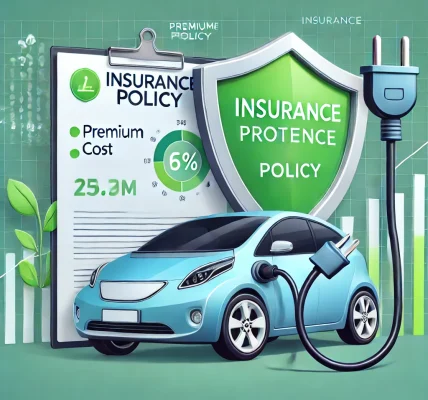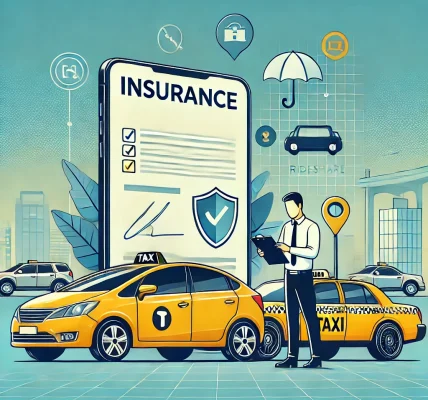Car insurance is a necessary expense for all vehicle owners, but that doesn’t mean you have to overpay for it. Many drivers are unaware that there are several strategies to reduce their car insurance premiums while still maintaining adequate coverage. In this detailed guide, we will explore the most effective ways to lower your car insurance costs without sacrificing protection.
- Shop Around and Compare QuotesOne of the simplest ways to save money on car insurance is to compare quotes from multiple insurers. Rates can vary significantly from one company to another, even for the same level of coverage. Here’s how you can get the best deal:
Use online comparison tools to get instant quotes from multiple providers.
Contact different insurance companies directly to inquire about discounts.
Check reviews and ratings to ensure the insurer has a good track record for claims processing.
Consider working with an independent insurance agent who can help you find the best policy. - Increase Your DeductibleA deductible is the amount you pay out-of-pocket before your insurance coverage kicks in. By increasing your deductible, you can lower your monthly premium. However, make sure you choose a deductible amount that you can comfortably afford in case of an accident.
Example:A $500 deductible might result in a higher premium compared to a $1,000 deductible.
If you have an emergency fund, opting for a higher deductible can be a smart way to reduce your overall costs. - Take Advantage of DiscountsMost insurance companies offer various discounts that can significantly reduce your premium. Some common discounts include:
Safe Driver Discount: If you have a clean driving record with no accidents or violations, you may qualify for lower rates.
Bundling Discount: Combining your car insurance with other policies (such as home or renters insurance) can lead to savings.
Low Mileage Discount: If you drive fewer miles than the average driver, you may be eligible for a lower premium.
Good Student Discount: Students with good academic records can often receive discounted rates.
Defensive Driving Course Discount: Completing an approved defensive driving course can lower your premiums.
Anti-Theft and Safety Features Discount: Cars equipped with anti-theft devices, airbags, and other safety features may qualify for discounts. - Maintain a Good Credit ScoreYour credit score plays a significant role in determining your car insurance premium. Insurers consider individuals with higher credit scores to be lower risk. To improve or maintain your credit score:
Pay bills on time and keep your credit utilization low.
Regularly check your credit report for errors and dispute inaccuracies.
Avoid opening too many new credit accounts at once. - Drive Safely and Avoid AccidentsA clean driving record is one of the best ways to keep your insurance rates low. Accidents and traffic violations can lead to higher premiums, so practicing safe driving habits is essential. Some ways to ensure a safe driving record include:
Following traffic laws and speed limits.
Avoiding distractions such as texting while driving.
Being cautious in adverse weather conditions.
Using defensive driving techniques to avoid collisions. - Consider Usage-Based or Telematics InsuranceMany insurance companies now offer usage-based insurance (UBI) programs, which use telematics devices to track your driving habits. These programs can reward safe driving with lower premiums. Some benefits include:
Discounts for driving fewer miles.
Lower rates for safe driving behaviors (e.g., smooth braking and consistent speed).
Personalized premiums based on your actual driving habits. - Choose the Right Coverage for Your NeedsWhile it’s crucial to have adequate coverage, you should also avoid paying for unnecessary add-ons. Here are some ways to optimize your coverage:
Assess Your Car’s Value: If your car is older and has a low market value, you may not need comprehensive and collision coverage.
Adjust Coverage Limits: Ensure that your liability coverage meets state minimums while considering additional protection if needed.
Drop Unnecessary Coverages: Some policies include add-ons like roadside assistance or rental car reimbursement, which you may already have through other means. - Limit Claims for Minor IncidentsFiling too many claims can lead to higher premiums. If the damage from an accident is minor and repair costs are close to your deductible amount, it might be more cost-effective to pay out of pocket rather than making a claim.
- Consider Paying Your Premium AnnuallyMany insurance companies offer a discount if you pay your premium in full rather than in monthly installments. This not only saves money but also helps you avoid installment fees or interest charges.
- Move to a Safer LocationYour ZIP code plays a role in determining your insurance rates. Urban areas with higher crime rates and accident risks typically have higher premiums than suburban or rural areas. While moving just to save on insurance might not be practical, it’s something to consider if you’re relocating for other reasons.
- Drive a Car with Lower Insurance CostsSome cars are more expensive to insure than others. When purchasing a new vehicle, consider how its make and model will affect your insurance rates. Factors that impact insurance costs include:
Repair and replacement costs.
Safety ratings and crash test results.
Theft rates for the vehicle model. - Stay with a Single Insurer for Loyalty DiscountsSome insurance providers offer discounts to long-term customers. If you’ve been with the same insurer for several years and have a good track record, ask about loyalty discounts that may be available to you.
Final ThoughtsLowering your car insurance premiums while maintaining comprehensive coverage is possible with the right strategies. By shopping around, driving safely, leveraging discounts, and making informed decisions about your policy, you can significantly reduce your costs. Always review your policy annually to ensure you’re getting the best deal and that your coverage still meets your needs.
Taking proactive steps today can lead to long-term savings, allowing you to enjoy peace of mind without overpaying for car insurance.


